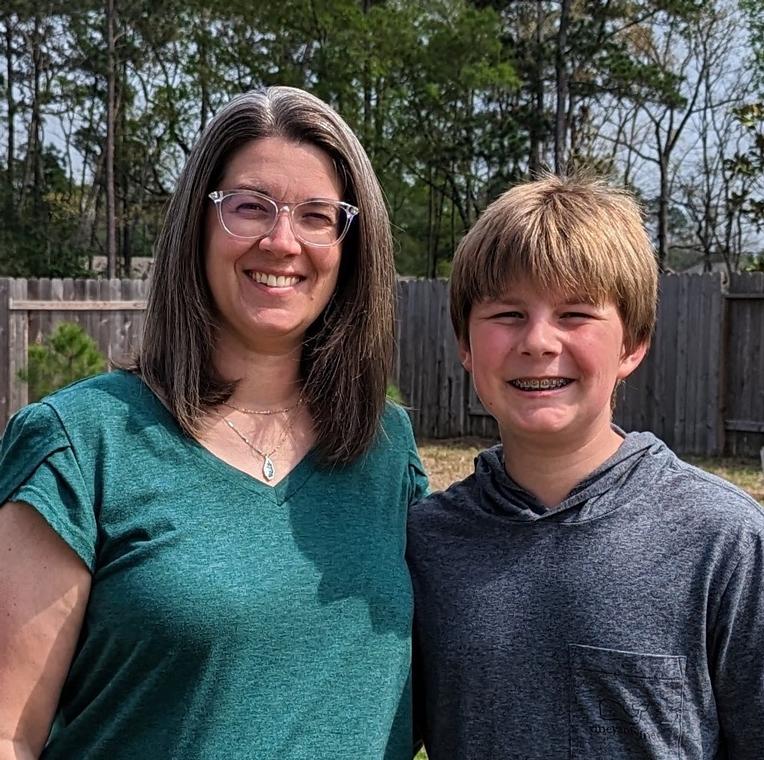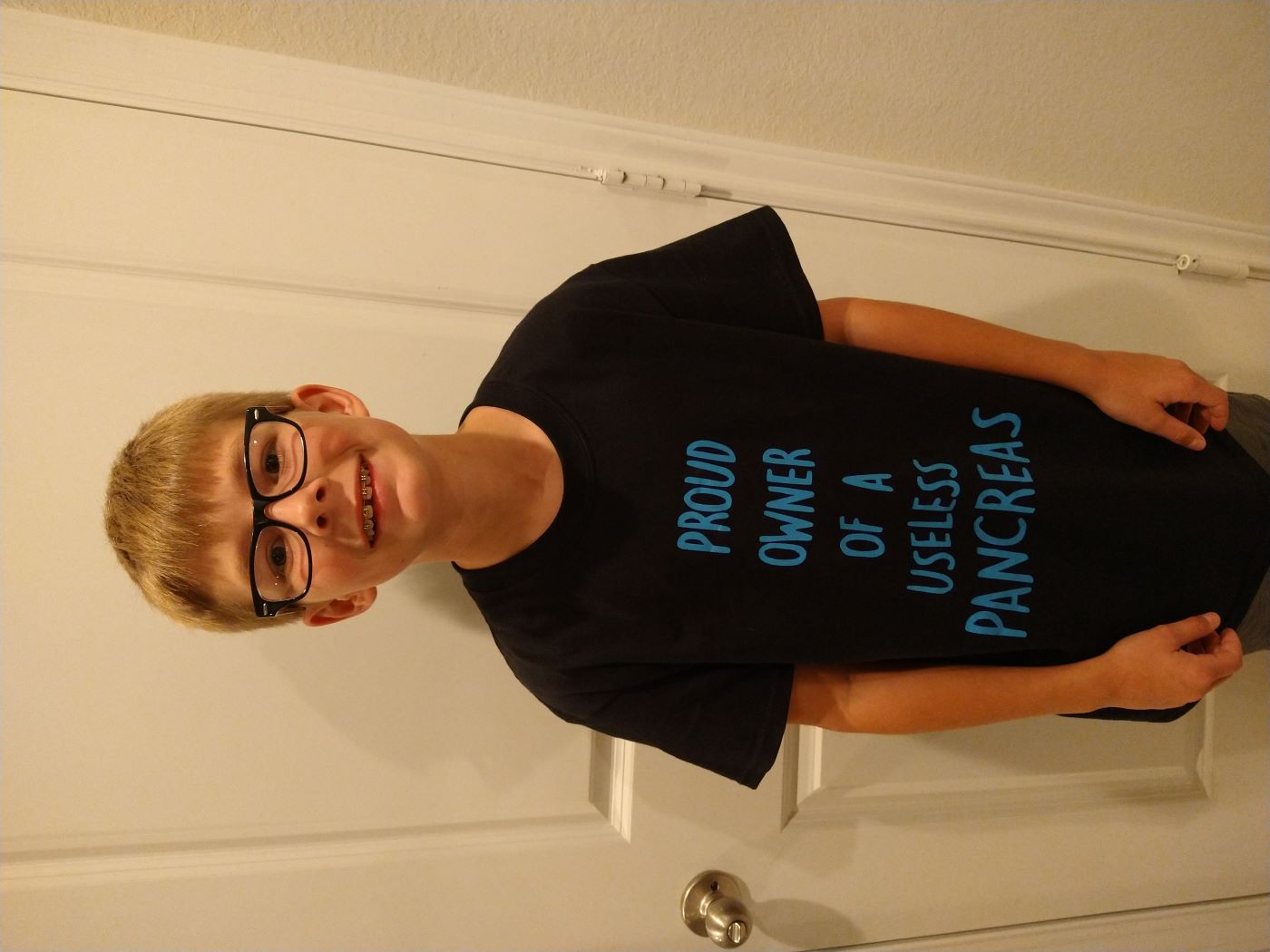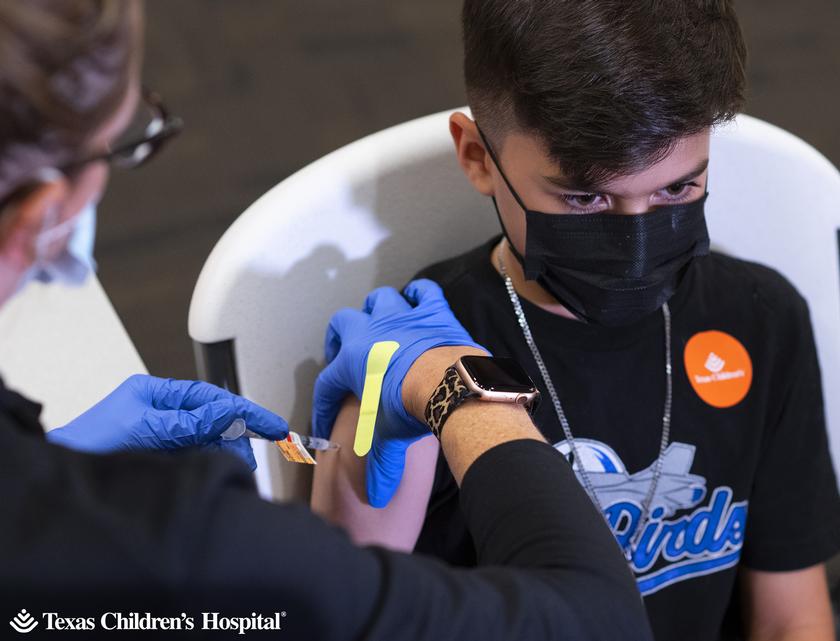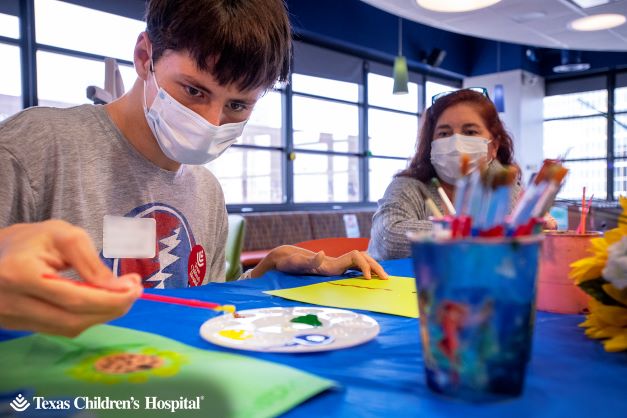- Sections :
- Crime & Public Safety
- Restaurants & Food
- Sports
- More
Categories
Local family deals with impact of Type 1 diabetes on their child, wants to alert public to dangers
THE WOODLANDS, TX – One local family is on a quest to ensure that no others have to deal with the anguish and mystery of the rapid onset of Type 1 diabetes to a young child. Kathy and Philip Sweger, both members of the faculty at The Woodlands Christian Academy, had their lives rattled due to the chronic illness. Woodlands Online was able to sit down with Kathy to hear about the story of their son James and his prognosis.
In June of 2021, Kathy noticed some unusual physiological changes in then-11-year-old son James. The symptoms he exhibited included excessive thirst, weight loss, and exhaustion, each of which could have been easily explained away by normal ‘kid-related’ issues. It didn’t simplify matters that James had been spending extended vacation time with his grandparents when the symptoms first presented.
For most parents, the symptoms would have continued unabated for a while after being understandably written off; certainly very few out there know that these symptoms also reflect the rapid onset of Type 1 diabetes, and that if the symptoms are allowed to continue unchecked, true danger could be right around the corner.
How Kathy’s story diverges from the more tragic result that could have befallen anyone else is that she had a friend, Amy, with a child afflicted with diabetes. She recalled a graphic her friend had posted depicting the warning signs of type 1 diabetes that Amy had shared on social media. When Kathy reached out to her friend with questions, the answer was to get James to the ER, stat; a blood sugar result showed that he was perilously close to being in ketoacidosis, a life-threatening condition.
Fortunately, the family had moved to The Woodlands the year before, and were minutes away from Texas Children’s Hospital - The Woodlands. “The doctors there are wonderful and made the entire experience, then and now, so much more bearable.”
With Type 1 diabetes, the pancreas effectively stops working; there is no cure for the disease at this time. Further, and adding to the frequent missing of it as a cause of symptoms, it is not diet or lifestyle dependent. Many people feel that a proper diet can deter diabetes, but that has no bearing on Type 1 diabetes (an autoimmune disease) and is only but one of many possible factors in contributing to the Type 2 version, along other issues such as genetics, history of prediabetes or gestational diabetes, and environmental factors.
James and his parents were now faced with a lifelong radical change to their lives. “My first thought was, ‘Oh, no, this can’t be happening,’” said Kathy about her family’s first experience with diabetes. “Once we realized that this wouldn’t be going away, that James and us would be dealing with it all our lives, we started preparing for the future.”
Life for James, thanks to monitoring of his blood sugar and insulin levels, paired with the latest technological advancements in diabetic care, is by and large normal most days. In fact, most of the time he prefers to not discuss the issue beyond occasionally with close friends or his family.
“If he’s regulated [with his levels], he feels good,” said Kathy. “If his levels get low, he can feel it and not in a good way. He gets giddy and shaky. Conversely, if his levels are too high, it may affect his mood but not in other ways; and that can cause damage if we don’t keep an eye out.”
Fortunately, James’ monitoring systems and daily care doesn’t involve the stereotypical hypodermic needles and glass vials we tend to see in the movies. He wears an insulin monitoring/distributing pump that he changes out every three days. The on-site nurse at his school, too, assists him in his daily care to great effect.
“The doctors told James he could still grow up to do anything he wanted, with just two exceptions: he couldn’t join the military, and he couldn’t fly commercial airplanes,” said Kathy. “Fortunately, he’s more of a creator / builder. He loves to work with his hands, and has also shown an interest in working with forges.”
One resource that proved invaluable to the Sweger family Kathy is global diabetes nonprofit organization Beyond Type 1. The organization has several projects and programs, including the See the Signs Campaign. Launched in 2016, this campaign has placed the warning signs of Type 1 diabetes in front of millions of people annually through volunteer advocates, mass media opportunities and strategic partnerships in an effort to decrease life-threatening complications at diagnosis. The campaign was initially championed by the support of parent advocates and state chapters of the American Academy of Pediatrics working together to display warning signs posters in pediatrician offices nationwide. In fact, it was a graphic from this campaign that Amy had posted that had encouraged Kathy to take initial action.
To Kathy and the rest of the Sweger family, it is vital to spread the word of how swiftly and completely Type 1 diabetes can assail someone, hiding behind symptoms that can easily be overlooked until it is too late. She encourages parents to keep an extra eye out on their children exhibiting the signs of what is known as T1D, especially with the understanding that diet has nothing to do with its appearance.
In June of 2021, Kathy noticed some unusual physiological changes in then-11-year-old son James. The symptoms he exhibited included excessive thirst, weight loss, and exhaustion, each of which could have been easily explained away by normal ‘kid-related’ issues. It didn’t simplify matters that James had been spending extended vacation time with his grandparents when the symptoms first presented.
For most parents, the symptoms would have continued unabated for a while after being understandably written off; certainly very few out there know that these symptoms also reflect the rapid onset of Type 1 diabetes, and that if the symptoms are allowed to continue unchecked, true danger could be right around the corner.
How Kathy’s story diverges from the more tragic result that could have befallen anyone else is that she had a friend, Amy, with a child afflicted with diabetes. She recalled a graphic her friend had posted depicting the warning signs of type 1 diabetes that Amy had shared on social media. When Kathy reached out to her friend with questions, the answer was to get James to the ER, stat; a blood sugar result showed that he was perilously close to being in ketoacidosis, a life-threatening condition.
Fortunately, the family had moved to The Woodlands the year before, and were minutes away from Texas Children’s Hospital - The Woodlands. “The doctors there are wonderful and made the entire experience, then and now, so much more bearable.”
With Type 1 diabetes, the pancreas effectively stops working; there is no cure for the disease at this time. Further, and adding to the frequent missing of it as a cause of symptoms, it is not diet or lifestyle dependent. Many people feel that a proper diet can deter diabetes, but that has no bearing on Type 1 diabetes (an autoimmune disease) and is only but one of many possible factors in contributing to the Type 2 version, along other issues such as genetics, history of prediabetes or gestational diabetes, and environmental factors.
James and his parents were now faced with a lifelong radical change to their lives. “My first thought was, ‘Oh, no, this can’t be happening,’” said Kathy about her family’s first experience with diabetes. “Once we realized that this wouldn’t be going away, that James and us would be dealing with it all our lives, we started preparing for the future.”
Life for James, thanks to monitoring of his blood sugar and insulin levels, paired with the latest technological advancements in diabetic care, is by and large normal most days. In fact, most of the time he prefers to not discuss the issue beyond occasionally with close friends or his family.
“If he’s regulated [with his levels], he feels good,” said Kathy. “If his levels get low, he can feel it and not in a good way. He gets giddy and shaky. Conversely, if his levels are too high, it may affect his mood but not in other ways; and that can cause damage if we don’t keep an eye out.”
Fortunately, James’ monitoring systems and daily care doesn’t involve the stereotypical hypodermic needles and glass vials we tend to see in the movies. He wears an insulin monitoring/distributing pump that he changes out every three days. The on-site nurse at his school, too, assists him in his daily care to great effect.
“The doctors told James he could still grow up to do anything he wanted, with just two exceptions: he couldn’t join the military, and he couldn’t fly commercial airplanes,” said Kathy. “Fortunately, he’s more of a creator / builder. He loves to work with his hands, and has also shown an interest in working with forges.”
One resource that proved invaluable to the Sweger family Kathy is global diabetes nonprofit organization Beyond Type 1. The organization has several projects and programs, including the See the Signs Campaign. Launched in 2016, this campaign has placed the warning signs of Type 1 diabetes in front of millions of people annually through volunteer advocates, mass media opportunities and strategic partnerships in an effort to decrease life-threatening complications at diagnosis. The campaign was initially championed by the support of parent advocates and state chapters of the American Academy of Pediatrics working together to display warning signs posters in pediatrician offices nationwide. In fact, it was a graphic from this campaign that Amy had posted that had encouraged Kathy to take initial action.
To Kathy and the rest of the Sweger family, it is vital to spread the word of how swiftly and completely Type 1 diabetes can assail someone, hiding behind symptoms that can easily be overlooked until it is too late. She encourages parents to keep an extra eye out on their children exhibiting the signs of what is known as T1D, especially with the understanding that diet has nothing to do with its appearance.
Comments •






















